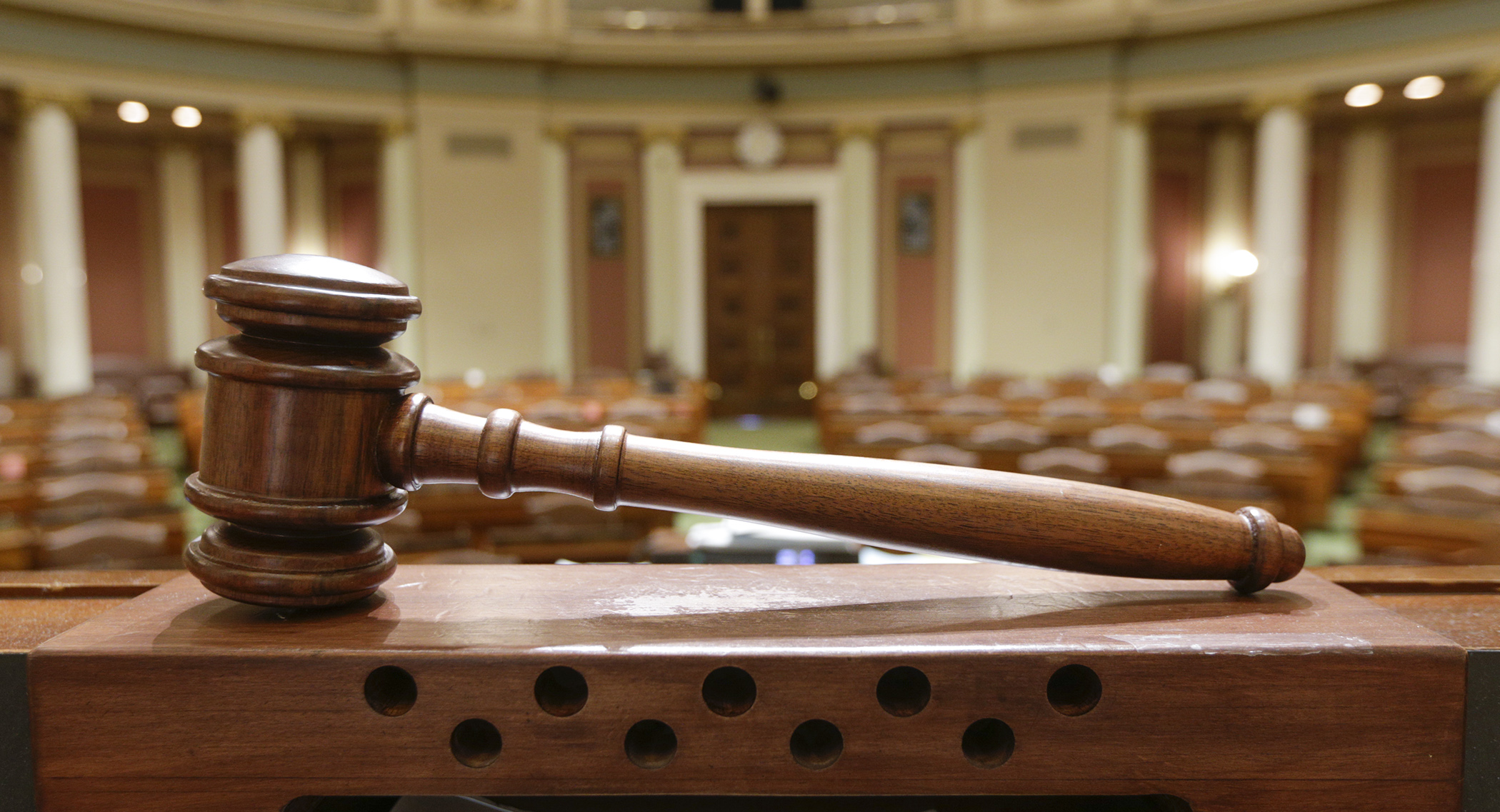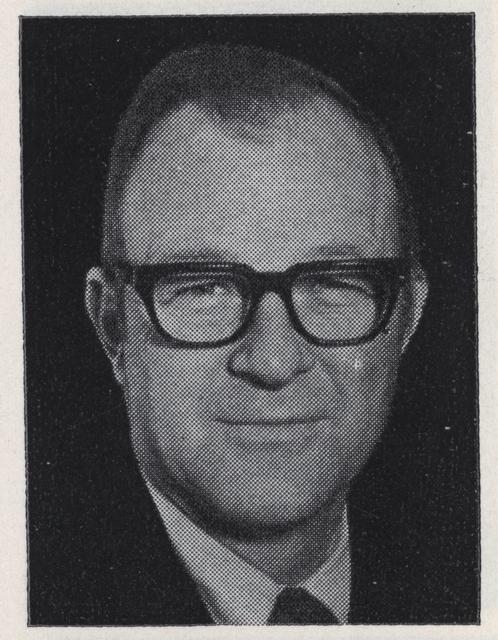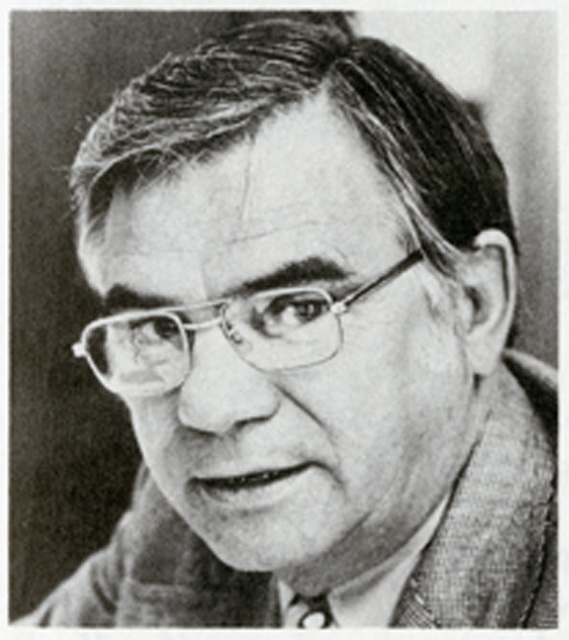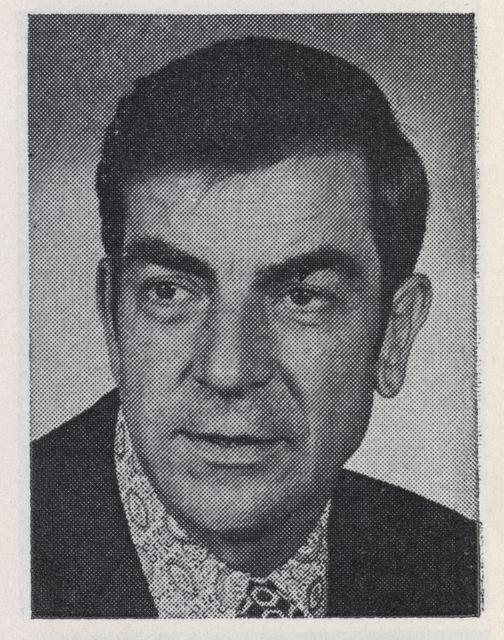The year the House was tied, and how the two parties made peace … until they didn’t

In sports, ties are unsatisfying, and can be settled by equally unsatisfying means, such as shootouts in hockey and soccer, or overtime in football and other sports.
But what about when a legislative body has an equal number of members from each party?
Then it can be more than simply unsatisfying, it can be paralyzing. In theory, a legislature can’t function. Who becomes speaker or majority leader when there’s no majority?
That was the situation when the House convened in January 1979 with 67 DFL members and 67 Independent-Republicans (as today’s Republicans were then called).
Here is the story of the high-stakes political power plays preceding that session, and a power-sharing agreement that gave one party the all-powerful position of Speaker of the House.
It’s also the story of how that agreement imploded in the last 10 days of the session, ending on a chaotic last day that featured fists slammed on desks, cries of order that were ignored, protests and dissents being logged in the Journal of the House, a walk out of DFL representatives that left the House without a quorum, and official business left unfinished, necessitating a special session.
An election result never before — or since — seen in Minnesota
Leading up to the November 1978 general election, the IR Party was hoping its message of “high tax” DFLers would gain traction among voters and result in the party picking up several seats to chip away at the majority control the DFL enjoyed in both chambers of the Legislature.
Most projections were for the IR Party to add a dozen or so House seats to its total of 35. But no one foresaw what actually happened: Independent-Republicans picked up 32 seats, resulting in each party having 67 seats.
This had never before happened in Minnesota, and it hasn’t happened since. There was therefore no blueprint to determine which party had the authority to select a speaker from within its ranks.
There was brief talk of adopting the solution that the state of Washington instituted earlier in the decade when their representatives elected two speakers.
But Section 5 of Article IV of the Minnesota Constitution prohibited that scenario, according to Minnesota legal scholars. Their consensus was the secretary of state would hold the speaker’s gavel until a majority of House members elected someone else.
Neither party wanted that solution, so each caucus selected a five-person team to negotiate a resolution. Each team was led by party caucus leaders: Rep. Rod Searle (IR-Waseca) and Rep. Irv Anderson (DFL-International Falls). Both men were also their respective party’s de facto choice to become speaker.
Negotiations start … then stall
Each side put forth proposals that would put their member in the speaker’s chair, offsetting that power by allotting the other party the chairs of powerful committees such as the rules, tax and appropriations committees. The latter was the equivalent of today’s House Ways and Means Committee.
 Rod Searle, an Independent-Republican from Waseca, was elected to the chamber's top post in a power-sharing agreement with the DFL. (Photo courtesy the Legislative Reference Library)
Rod Searle, an Independent-Republican from Waseca, was elected to the chamber's top post in a power-sharing agreement with the DFL. (Photo courtesy the Legislative Reference Library)Several other power-splitting combinations were also tried, including giving one party a one-person majority on various sub-committees or divisions of these three powerful committees.
But it was to no avail. Neither party wanted to give up the prestige and power of the speakership no matter what alternate powers were offered for balance.
Negotiations dragged beyond Christmas and into the new year, raising the prospect that the House would convene on Jan. 3 with Secretary of State Joan Growe in the speaker’s chair.
Observers also speculated that DFLers were not entirely committed to ending the stalemate because they were counting on a favorable court decision on an election contest filed against an IR member. If the decision went their way, DFLers could unseat an IR representative, giving them a 67-66 edge and the votes to elect the speaker.
The Pavlak case
The DFL Party had sued Rep. Robert Pavlak (IR-St. Paul) in Ramsey County District Court, alleging unfair campaign practices in the November 1978 election, specifically, distributing false information in campaign literature. A decision from Ramsey County District Court Judge Robert Breunig was expected in late December or early January.
But on New Year’s Day, with the Pavlak case still pending, IR leaders got wind of news that would actually give them a one-vote majority on the opening day of the session, now just two days away.
Rep. Richard Kostohryz (DFL-North St. Paul) had suffered a heart attack and would be in the hospital – and away from House floor votes – for at least two weeks.
Searle was pressured by members of his caucus to force a vote on the session’s opening day and capture the speakership for the IR Party.
But Searle rejected that plan for two reasons. First, when Kostohryz returned, so would the deadlock. And second, if DFLers walked out of that first day’s floor session, which Anderson hinted they would do, official House business would stop because the remaining 67 IR representatives would not meet the needed quorum of 68 members.
And then, just as suddenly, the balance of power shifted yet again.
On Jan. 2, the day before the 1979 session was to begin, Breunig dismissed the Pavlak case, thus knocking down a second pillar of negotiating power for DFLers.
With no deal in place to select a speaker, the House convened on Jan. 3 with Growe standing behind the podium at the front of the House Chamber.
Negotiations accelerate
Constitutionally, Growe could convene the House and perform perfunctory business, but she had no authority to name committee chairs or assign representatives to committees. Thus, without a brokered agreement between the two parties, the House was effectively paralyzed.
Both sides quickly agreed on one thing: It would be counterproductive to reconvene the House with Growe in the speaker’s chair. Party leaders agreed the next House session would be on Monday, Jan. 8 — five days after members were gaveled in.
Intense around-the-clock negotiations took place over the weekend with an agreement reached on major issues by Sunday afternoon.
The IR Party would get the speakership, and in return, the DFL Party would chair the three most powerful House committees: rules, taxes and appropriations. They also got one-vote majorities on the rules and tax committees.
The IR Party would name chairs of all divisions of the House Appropriations and Tax committees, plus get a one-vote majority on divisions under the Tax Committee.
A newspaper report characterized the settlement as “the best deal that could be cut under the circumstances” but also that the IR Party “paid a very high price for the post of Speaker.”
The session lurches forward, then implodes
On Jan. 8, Searle was elected speaker, defeating Anderson by a party-line vote of 67-66 (Kostohryz was still in the hospital).
By most accounts, the actual House business during the 1979 Legislature to propose, hear, and vote on bills went about fairly smoothly.
 The top DFLer in the House, Irv Anderson (DFL-International Falls) led his caucus in a walkout on the House Floor on the final night of the 1979 session. (Photo courtesy the Legislative Reference Library)
The top DFLer in the House, Irv Anderson (DFL-International Falls) led his caucus in a walkout on the House Floor on the final night of the 1979 session. (Photo courtesy the Legislative Reference Library)“Surprisingly, we were able to govern,” said Rep. Lyndon Carlson Sr. (DFL-Crystal), one of two current House members who served in the 1979 session. Rep. Mary Murphy (DFL-Hermantown) is the other.
Carlson recalls that bills getting to the House Floor in the 1979 session almost always had bipartisan support, a necessity in order to be approved by evenly divided committees.
That delicate balance meant that members rarely missed, or showed up late to, committee meetings or floor sessions, Carlson said. An absence meant that the opposing caucus could take advantage of the opportunity to pass or defeat a bill, or an amendment.
Although the 1979 session was surprisingly smooth, given the unique situation, there was a simmering courtroom drama unfolding that shattered the relative calm of the session just 10 days before it was set to adjourn.
Pavlak found guilty of violating campaign laws
Although Anderson announced in January that the House would not appeal the district court decision clearing Pavlak, the Senate Rules Committee decided to file an appeal to the state Supreme Court.
On May 11, the court announced in a 7-2 decision, that Pavlak had committed “deliberate, serious, and material” violations of campaign law. But the written decision was mum on whether Pavlak should lose his seat, saying that was up to the House to decide.
House DFLers saw their chance to regain the speaker’s chair, and launched their plan when the House convened the following Monday.
On May 14, Anderson called for the entire body to debate the issue of whether to unseat Pavlak. The IR position was the matter should be referred to a committee for discussion, with the hope that would delay a decision until the Legislature reconvened in January 1980.
House rules were clear that Pavlak could not vote on a motion to unseat him, but the rules were unclear if he could vote on any procedural motions preceding that. After several motions and counter-motions on the issue (chronicled in the May 14 Journal of the House), Pavlak rose from his seat to address the House.
Calling the floor debate a “kangaroo court,” Pavlak forcefully proclaimed his innocence. And with his “face red and his hands shaking with anger” (as described by Searle in a 1990 book he wrote about the session) Pavlak implored his colleagues to stop acting as “judge, jury, and hangman” until he got a fair hearing.
And then Pavlak collapsed on the House Floor. He was rushed to a nearby hospital where doctors said he suffered from severe emotional strain and temporary amnesia.
The House squabbles over the Pavlak case
With Pavlak hospitalized, the DFL had a 67-66 edge, which they successfully used – mere hours after Pavlak’s collapse – to pass a motion requiring the House to settle the Pavlak case by Friday. They were confident their plan would block the IR strategy to delay the decision on Pavlak’s status – and therefore keep the speaker’s gavel in IR hands.
And on that Friday, May 18, the deed was indeed done, and the House voted to declare that Pavlak’s District 67A seat was vacant and a special election was needed to fill it.
A newspaper account of the nearly five-hour debate noted that “several legislators had cried [and] others heard their voices crack with emotion as they tried to speak.” Pavlak was well-liked on both sides of the aisle, Carlson noted, and so the vote to oust him was very difficult for many DFLers.
But in the end, party loyalty mattered most, and the vote to unseat Pavlak was a party-line 67-66.
 Robert Pavlak, a St. Paul Independent-Republican, had been accused of violating campaign law, and DFLers in the evenly-divided chamber pushed to unseat him. (Photo courtesy the Legislative Reference Library)
Robert Pavlak, a St. Paul Independent-Republican, had been accused of violating campaign law, and DFLers in the evenly-divided chamber pushed to unseat him. (Photo courtesy the Legislative Reference Library)The IR caucus was furious, contending the vote was unconstitutional, based on Article IV, Section 7 of the state constitution, which states that a two-thirds majority is needed to expel a member.
DFLers countered they were not expelling Pavlak, but voting to declare he was not legally elected. The DFL claim was based on Article IV, Section 6 of the state constitution, which states, “Each house shall be the judge of the election returns and eligibility of its own members” – a decision requiring a simple majority.
Bitterness over the Pavlak battle simmered throughout a Saturday session of the House, where IR representatives prepared a “Protest and Dissent” statement on the “unconstitutional expulsion” of Pavlak, which they entered into the May 21 Journal of the House.
On that Monday, the last day of session, the DFL Party would have a one-vote edge for floor actions, including a vote to nullify the power-sharing structure agreed to before the session. Searle was sure DFLers were planning to do just that, even if it meant exponentially increasing the tension on an always pressure-filled session-ending day.
A practical reason for DFLers to gain control of the speakership on that last day would be that they could reorganize the House during the interim and have their power structure fully in place when the 1980 session would begin.
All eyes would be on Anderson on that final day to see if he would use the last-minute shift of power giving the DFLers a one-vote majority to make a move to unseat Searle as speaker.
Final day fireworks
A must-do item on the IR agenda for that final day was to pass a resolution supporting Pavlak in his quest to retake his seat.
The resolution was designed to overrule Growe, the DFL secretary of state, who had ruled that because Pavlak was ruled to have violated campaign laws, he could not be a candidate in the special election for his former seat.
The IR resolution stated that only the House can decide such matters and that Pavlak, if he ran for his old seat and won, would be welcomed back to the House.
That IR resolution supporting Pavlak hit the House floor at about 11:45 p.m.
Throughout the day, Anderson had not made a move to unseat Searle as speaker, and at this late hour it was clear that he would not be doing so. But he still had one last item on his agenda.
Taking up that highly partisan resolution so close to the midnight adjournment — and doing so at the expense of other must-pass legislation — was too much for Anderson and the DFL caucus to handle.
Anderson tried to raise an objection to the Pavlak resolution, but Searle ignored him. DFLers pounded their fists on their desks and shouted, in unison: “Point of order! Point of order! Point of order!”
Searle ignored the calls and pressed ahead, calling for a roll-call vote on the resolution. At first, DFLers lit up the electronic voting board with red lights, sure they could defeat it.
Then, in an act of protest, Rep. John Sarna (DFL-Mpls) jumped to his feet and shouted “No votes! Let’s take our votes off the board.” All DFL representatives then canceled their red votes, and many marched out of the chamber.
When Searle closed the roll, the tally on the resolution declaring that Pavlak could run for his old seat was a party-line vote of 64-0. Despite the electronic voting board evidence that there was not a quorum present, Searle — over a chorus of DFL boos — banged the gavel and declared the resolution adopted.
The witching hour comes … and goes
A few minutes before midnight, the constitutionally mandated hour of adjournment, a conference committee report arrived at the chief clerk’s desk. This was must-pass legislation, a nearly billion-dollar transportation appropriations bill.
Arriving along with the conference committee report was a top aide of Gov. Al Quie (IR). The aide moved to the podium and whispered something to Searle. DFLers, still stinging from the Pavlak resolution, vocally objected to that breach of protocol. In response, Searle announced, “The governor is just trying to accommodate the Legislature.”
Sensing that Searle would take up the report and blow past the midnight deadline, Anderson shouted defiantly in response: “I’m not going to be a party to covering the clock!”
With that, Anderson began to walk off the House floor.
But before exiting, according to a Minneapolis Tribune report, Anderson paused, and “sounding like a drill instructor” cupped his hands around his mouth and shouted, “Come on Democrats, let’s go!”
Anderson marched out of the House chamber, followed by many of his DFL colleagues.
The walkout left the House in chaos and disarray, with the remaining members and the speaker confused about what, if any, business could be conducted.
And so, at approximately 12:20 a.m., past its deadline and without passing the transportation appropriations legislation, the 1979 session lurched to an end.
Also victim to the time crunch was major legislation on workers’ compensation and energy. To deal with those three major bills left in limbo, a one-day special session was held on May 24.
Post-session denouement
The DFL caucus was outraged by the events on that last day, and entered a “Protest and Dissent” into the Journal of the House alleging that seven “elements of parliamentary procedure were openly violated” by Searle in the waning minutes of the session.
The final two sentences of the DFL dissent express the high level of indignation: “The actions of the Speaker in this matter constitute the most blatant misuse of authority we have witnessed in our legislative experience. The events of that evening constitute a complete breakdown of the orderly legislative process and our concept of rule by law.”
For his part, Searle admitted a decade later, in his 1990 book, only that he might have “suddenly developed selective vision and hearing problems” leading him to ignore DFL protestations during the final hectic minutes of the 1979 session. “It was truly a bitter way to end the session,” he wrote.
Epilogue
The special election to fill Pavlak’s vacant seat took place on June 19, 1979. Both parties spent heavily on the race, as the outcome would determine if the 1980 session would begin with another 67-67 tie, if the IR candidate won, or a 68-66 edge for DFLers if their candidate won.
The race was between DFL candidate Frank Rodriguez Sr. and Pavlak, who had successfully sued to be able run in the special election.
Rodriguez defeated Pavlak by 321 votes.
Immediately after Rodriguez’s victory, Anderson began demanding that Searle resign the speakership. He declined, stating that a House floor vote is the only way to elect a new speaker.
Most everyone thought Anderson would be the new speaker for the 1980 session, and indeed he took to calling himself the speaker-elect in the interim.
But it was not to be.
The DFL Party was not uniformly supportive of Anderson, and on the first day of the 1980 session, a group of 26 DFLers joined with 49 IR representatives to elect Rep. Fred Norton (DFL-St. Paul) as speaker.
But that’s another story for another day.
Related Articles
Search Session Daily
Advanced Search OptionsPriority Dailies
Speaker Emerita Melissa Hortman, husband killed in attack
By HPIS Staff House Speaker Emerita Melissa Hortman (DFL-Brooklyn Park) and her husband, Mark, were fatally shot in their home early Saturday morning.
Gov. Tim Walz announced the news dur...
House Speaker Emerita Melissa Hortman (DFL-Brooklyn Park) and her husband, Mark, were fatally shot in their home early Saturday morning.
Gov. Tim Walz announced the news dur...
Lawmakers deliver budget bills to governor's desk in one-day special session
By Mike Cook About that talk of needing all 21 hours left in a legislative day to complete a special session?
House members were more than up to the challenge Monday. Beginning at 10 a.m...
About that talk of needing all 21 hours left in a legislative day to complete a special session?
House members were more than up to the challenge Monday. Beginning at 10 a.m...